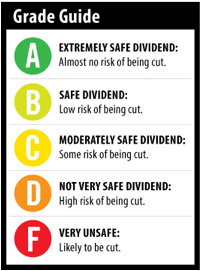 It’s no surprise that with the slump in oil prices, investors who have their money in high-yielding energy plays are getting antsy.
It’s no surprise that with the slump in oil prices, investors who have their money in high-yielding energy plays are getting antsy.
It’s why so many Wealthy Retirement subscribers have requested that I look at the dividend safety of companies like Linn Energy (Nasdaq: LINE) and Seadrill Limited (NYSE: SDRL).
This week, we’re sticking with the oil theme. Mike W. asked that I examine the dividend safety of another high-yielding oil industry player – Transocean Ltd. (NYSE: RIG). At current prices, the yield is 15.6%.
[ad#Google Adsense 336×280-IA]In the most recently reported quarter, which ended in September – before oil prices took a dive – the company generated $517 million in free cash flow.
It paid out $272 million in dividends for a comfortable payout ratio of 53%.
The dividend is $0.75 per share on a quarterly basis.
Transocean announced the dividend through March 2015. On an annual basis, that comes out to $1.1 billion.
Going forward, the picture isn’t as rosy.
The company is expected to spend $1.2 billion in capital expenditures in 2015.
But contracts aren’t getting signed. With plummeting oil prices, oil producers aren’t in a rush to employ Transocean’s deepwater drilling rigs.
Its rigs are 50% to 78% contracted, depending on the type of equipment. Management has stated that demand is weak. On the company’s conference call, CEO Steven Newman wouldn’t say that the dividend is safe or that a cut is imminent, only that the board would take a balanced approach to capital allocation and would make an announcement in the spring.
But free cash flow is projected to dry up. For the full year, Wall Street projects Transocean’s free cash flow to be $437.6 million, which is less than what it generated in the last quarter. And it gets worse from there.
 In 2015, the consensus estimate is free cash flow of just $167.4 million, turning negative in 2016.
In 2015, the consensus estimate is free cash flow of just $167.4 million, turning negative in 2016.
Of course, a rebound in oil prices will likely change those estimates.
However, with an already high 15%-plus yield, unless demand improves soon, it’s hard to imagine the company wouldn’t reduce the dividend.
It could cut it in half and still offer shareholders an above-average yield while preserving capital.
Transocean reduced its dividend in 2013 from $0.79 per quarter to $0.56.
I wouldn’t be surprised to see it happen again in 2015.
Dividend Safety Rating: D
— Marc Lichtenfeld
[ad#sa-generic]
Source: Wealthy Retirement


